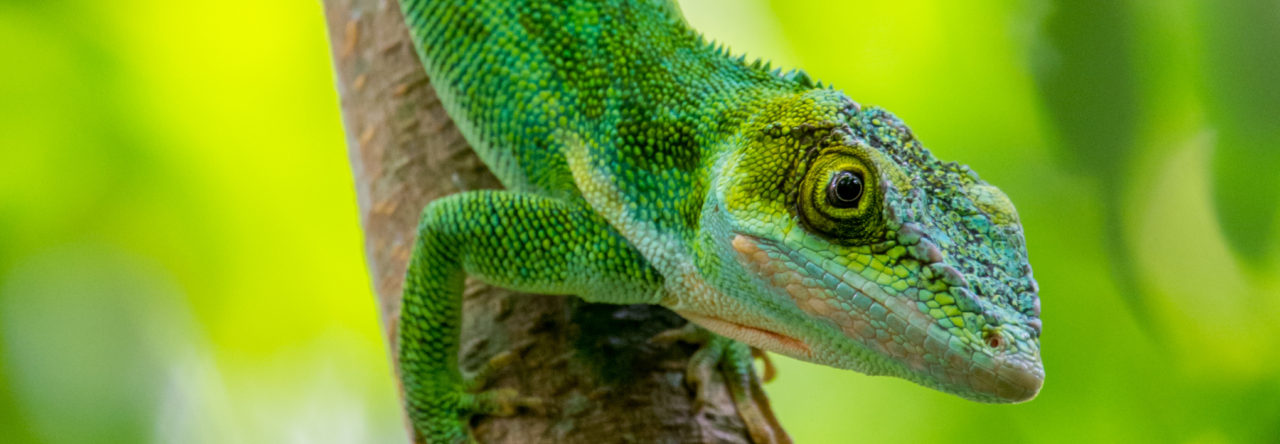And here’ s more information on these classic prints. The webpage of the NYPL Digital Gallery proclaims that it “is The New York Public Library’s image database, developed to provide free and open online access to hundreds of thousands of images from the original and rare holdings of The Library. Spanning a wide range of historical eras, geography, and visual media, NYPL Digital Gallery offers digital images of drawings, illuminated manuscripts, maps, photographs, posters, prints, rare illustrated books, and more. Encompassing the subject strengths of the vast collections of The Library, these materials represent the applied sciences, fine and decorative arts, history, performing arts, and social sciences.”
Most importantly, of course, these holdings include classic paintings of anoles, including those by Catesby and others. For example, searching using the term “Anolis” yields 12 paintings, including those of A. carolinensis, A. cuvieri, A. sagrei and others. Be forewarned that they are categorized by the name used in their original source. Holbrook’s drawings from North American Herpetology were just added (thanks to CNAH for bringing this to AA’s attention), but our beloved North American green is categorized as Anolius carolinensis.
And for those of you who’ve already begun your holiday shopping, prints of these images are available at a reasonable cost.
- Evolution in Real Time on Lizard Island - March 23, 2025
- Spider Snags Adult Anolis osa - March 22, 2025
- An Homage to the Green Anoles of New Orleans - March 21, 2025



geneva
There is something incredibly appealing about the natural history plates painted and drawn in older manuscripts. Another great place to find manuscripts and download those out of copyright is the Biodiversity Heritage Library. I have this plate framed at my desk.
Natalie Jacewic
As an undergrad (this is going to be my catch-all for anytime I don’t know things I should), I don’t have much of a sense of the history of Anolis studies. Clearly people have been drawing anoles for awhile, but when did anoles become a model organism for evolutionary biology?
Rich Glor
I would say that anoles started to become a model system when Ernest Williams started working on them. To my knowledge, he was the first to have a bunch of students addressing various aspects of anole evolution and ecology.